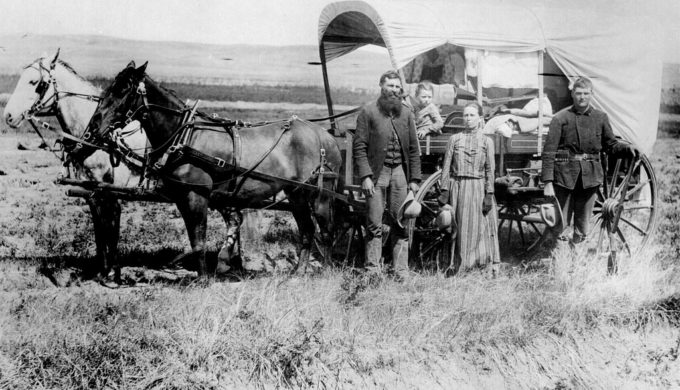As settlers began to make their way into the Guadalupe River Valley, a man by the name of John Hancock was granted land on the northern side of the river, approximately 15 miles northwest of New Braunfels. A second, by the name of James B. Crain, established a mill at the Gum Spring crossing, approximately 17 miles from New Braunfels. It was the early 1850s, and small towns began to grow up around them. Naturally, they were named for their founding settlers, and therefore went by Hancock and Crain’s Mill, respectively.
History
The Deep, As Well As the Submerged, History of Canyon Lake

Photo: Flickr/Marion Doss
Over time, many changes to these towns took place, including the opening and closing of businesses, the relocated of townspeople, and the complete closing and renaming of one of the towns altogether (from Crain’s Mill to Crane’s Mill). Additional little communities such as Sattler and Startzville also grew from similar circumstances in similar ways, and development in the area maintained a steady pace. Many of these communities’ settlers were farmers, and each community had its own economic base, dance hall, and school. Although there was no formally established church building, services were held in a local school or an open field, and everyday life seemed to carry on reasonably well for a time. By the 1920s however, an increase of boll weevils followed by a decrease of cotton production was wreaking havoc on the area’s economy. The resulting decline in jobs and income left the settlements practically deserted by the 1950s. In the late ‘50s, however, the U.S. Army Corps of Engineers began working on a dam construction project approximately 12 miles northwest of New Braunfels. The project created such an economic boon for the area, that a new town called Canyon City was established in 1958. The dam was completed and water control began in 1964, forming Canyon Lake. By 1968, the lake had filled more than 8,000 acres, and the towns of Hancock and Crane’s Mill were completely submerged.

Photo: Facebook/Landscapes of the Texas Hill Country Via Jeff Downs
Originally intended as a primarily reservoir for the city of San Antonio, the development of Canyon Lake had an unforeseen secondary effect of developing the economy of Comal County. Prior to the lake even being filled, construction had started on one of dozens of new subdivisions that would spring up along its 60-mile lakefront and throughout the hills that surrounded it. Over 80 new neighborhoods had been developed by the mid-1980s, and the communities of Sattler and Startzville, which remained as small ranching communities post-Canyon Lake development, found themselves becoming thriving economic centers servicing tourists to the area from both Austin and San Antonio. The year-round population encircling the lake was estimated between 12,000 and 16,000, and grew to accommodate many more on the weekends.

Photo: Facebook/Texas Boys Outdoors
By 1994, the Heritage Museum of the Texas Hill Country was established along Rt. 2673 (between Sattler and Startzville) to exhibit some of Canyon Lake’s deep and rich history. Including a site featuring more than 350 dinosaur tracks as well as a trail highlighting plant species that are native to the area, the museum chronicles and preserves the pioneer history of Canyon Lake and Canyon Dam, as well as the Native American history that preceded it. Ironically, the man-made lake resulted in a new water development in 2002, leading to additional history of the area being exposed. After six weeks of flooding, the amazing Canyon Lake Gorge formed when a torrent of floodwaters carved a new canyon, plunging nearly 80 feet at its deepest, and exposed a fault line which was previously unrecorded, together with hidden rock formations, fossils, and new dinosaur footprints! Presently, eight lakeside parks are operated along Canyon Lake by the U.S. Army Corps of Engineers, together with a number of yacht clubs on both the north and south sides. There’s also water recreation here where previously, no such thought would have occurred at the time of original settlement, exploding now to include more than 20 boat ramps and two marinas, as well as the by-products of campgrounds, golf courses, and hiking trails that developed as a result. Beautiful scenery, great places to stay, and a thriving Texas Hill Country tourism market all grew from the planning and creation of Canyon Lake, and the submerging of the very first Texas towns to populate this area in the mid-1800s.
Source:



